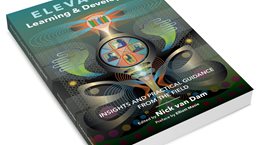Organizations around the world are experiencing rapid, sweeping changes in what they do, how they do it, and even why they do it. Increasing globalization and new technologies demand new modes of working and talent with new and diverse skills. To flourish in this environment, individuals must keep learning new skills. In fact, studies show that workers who maintain their ability to learn outpace other professionals.1 The people who will thrive in the 21st century will be those who embrace lifelong learning and continually increase their knowledge, skills, and competencies.2
Stay current on your favorite topics
Building a workforce of such lifelong learners is critical for organizations to respond to a changing business environment. To ensure they have the required skills and talent, companies must create a learning-for-all culture in which people are encouraged and inspired to continue learning new skills.
But the burden does not fall exclusively on businesses; it’s also up to the individual to seize the opportunity to get ahead. Seven distinctive practices can help employees become lifelong learners and remain relevant in today’s business environment (Exhibit 1).

1. Focus on growth
Learning starts and ends with the individual. But is there a limit to how much a person can learn? Is intelligence fixed at birth or can it be developed? In 2008, researchers asked the ten best chess players in the world—people who had spent 10,000 to 50,000 hours mastering the game—to take an IQ test.3 They discovered that three out of ten had a below-average IQ. Since playing chess at the top level in the world is associated with extreme intelligence, they wondered how this result was possible.
Many studies have confirmed that it is not intelligence that creates expertise but effort and practice—that is, hard work.4 The most successful people devote the most hours to deliberate practice, tackling tasks beyond their current level of competence and comfort, observing the results, and making adjustments.5 Such studies show that intelligence can be developed and that there are no limitations on what we can learn throughout our lives. Indeed, the brain is like a muscle that gets stronger with use, and learning prompts neurons in the brain to make new connections.6
Over the past 30 years, Carol Dweck, a psychologist at Stanford University, has intensively studied learners.7 She has determined that people generally fall into one of two categories when it comes to how they view their ability to learn: a fixed mind-set or a growth mind-set. And she has concluded that mind-set has a significant impact on the effort put forward, perception of criticism, willingness to accept failure, and, ultimately, how much will be learned.
People with a fixed mind-set believe that their learning potential is predetermined by their genes, their socioeconomic background, or the opportunities available to them. They might have thoughts like, “I’m not good at public speaking, so I should avoid it.”
Those with a growth mind-set, however, believe that their true potential is unknown because it is impossible to foresee what might happen as a result of passion, effort, and practice. They appreciate challenges because they see them as opportunities for personal growth. Ultimately, they may achieve more of their potential than someone with a fixed mind-set.
Organizations can encourage employees to tackle new challenges and learn new skills by assigning them new and different tasks. But individuals need to believe that they have unlimited capacity to learn and grow. People can take the following actions to develop a growth mind-set8:
- Determine if you have a fixed mind-set and, if you do, establish why.
- Recognize that you have a choice in how you approach and interpret new tasks, ideas, or situations.
- Learn to hear and observe the fixed mind-set voice without judgment while continuing to embrace challenges.
- Refocus with a growth mind-set.
2. Become a serial master
Traditionally, workers developed deep expertise in one discipline early in their career and supplemented this knowledge over the years with on-the-job development of integrative competencies. This kind of knowledge can be represented by a T-shape or profile (Exhibit 2).

Longevity has made this approach obsolete. Since 1840, life expectancy has increased three months for every year, meaning that people are staying, and will continue to stay, in the workforce longer.9 Because of this trend, they need depth in different areas of expertise, supplemented with targeted on-the-job development, to stay relevant. Today, knowledge should resemble an M-shape or profile (Exhibit 3).

Imagine someone has her master’s degree in journalism and begins her career working at a publication. During her 30s, she finds herself specializing in financial journalism, so she decides to pursue a master’s degree in business economics. As she proceeds into their 40s and 50s, she might continue to grow by taking in-depth master classes on related topics, such as digitization.
Relevant skills have become currency in the workplace. Using the M-profile as a guide and achieving mastery in a few topics will set professionals apart. Organizations, for their part, can support workers in their development by offering stipends for coursework and suggesting master classes and professional development sessions.
3. Stretch
Many researchers have suggested that learning takes place only when people stretch outside their comfort zone.10 When people work on tasks that aren’t entirely comfortable, they are said to be in their learning zone, where they acquire new knowledge and develop and practice new skills.11
The learning zone exposes people to risk and stress, which can either be helpful or detrimental to their efforts. According to the Yerkes–Dodson Law, a curvilinear relationship exists between an increase of stress (which they term “arousal”) and the enhancement of performance (Exhibit 4).12 When people first encounter a new task, they experience “good” stress, leading to a higher level of performance. However, too much stress can cause anxiety (“bad” stress) and have a negative impact on performance. So, while it’s important for people to stretch outside their comfort zone, it’s critical to choose the right tasks and the right pace.

The personal growth and stretching that individuals experience from continued exposure to the learning zone typically follows a standard progression represented as an S-curve.13 Developed in the 1960s, the S-curve shows how, why, and at what rate ideas and products spread throughout societies.14
When people try something new, such as starting a new job, they are at the beginning of a new S-curve. They experience a steep learning curve in which their knowledge and skills increase rapidly. During this first stage of the S-curve, their progress and the business impact of their performance are limited. After a time, they reach an inflection point where their understanding, competence, and confidence suddenly accelerate very quickly, and they have an increasing impact on the business.
Would you like to learn more about McKinsey Academy?
Continuing in the role for a bit longer, they will reach the upper, flat part of the S-curve. At this stage, the excitement of the new role has worn off, personal learning and development have stalled, tasks and activities have become automatic, boredom has kicked in, and their impact on the business has slowed down significantly.
If people stay in their comfort zone—not seeking out new challenges or new roles—their performance may suffer, and they might even be replaced. Lifelong learners, however, can avoid this pitfall and find new ways to stretch by starting a new S-curve. And organizations can help keep employees on track by providing learning and stretching opportunities at timed intervals.
4. Build a personal brand
Everyone has a professional brand, whether it’s a carefully crafted expression of who they want to be or simply the impression they make on others. A brand communicates a person’s value and provides a focus for personal learning and development. A brand that defines a person’s best elements and differentiates him is essential in achieving career goals—and in demonstrating his accomplishments, both to potential employers and current colleagues. When colleagues understand who a person is and what unique capabilities they bring to the table, that person is more likely to receive interesting new assignments or be considered first for new positions.
Key elements of a personal brand include authenticity, a clear value proposition, a story, expertise, consistency, visibility, and connections. In Leadership Brand: Developing Customer-Focused Leaders to Drive Performance and Build Lasting Value, Dave Ulrich and Norm Smallwood suggest individuals can build a brand by setting clear goals for the year ahead, acknowledging what they want to be known for, being clear about their identity, and writing and testing a personal brand statement.
Once individuals craft their brand statement, they can use social media tools to help convey that brand and their skill set. For example, it’s possible to earn digital badges for a LinkedIn profile through online learning vendors such as Coursera, edX, Lynda.com, and Udemy. Such badges demonstrate not only a person’s skills but also their commitment to continued growth.
A personal brand is not static—it should evolve over the course of a career. Since most people develop new skills and play different professional roles, they will need to rebrand themselves multiple times. Lifelong learners use the process of building a brand to think through what skills they have and which ones they should develop to make themselves more marketable—both within the company and beyond. L&D professionals can counsel people in this process and provide a way for them to develop the necessary skills.
5. Own your development
Lifelong employment no longer exists, so people today expect to work for many organizations throughout their careers—and maybe even for themselves at times. To maintain forward motion in an environment that lacks continuity, people need to own their development and take charge of their learning through the following actions (Exhibit 5).

Create and execute learning goals. To become and stay successful, people need to ask themselves, “How can I ensure that I’m more valuable at the end of a year than I was at the beginning?” Individuals can create learning goals by assessing their current knowledge and expertise and identifying competency gaps. They should also plan to pursue the most important learning goals relentlessly, a trait that can become a competitive advantage.
Measure progress. People should periodically reflect and assess their progress. Learning journals or logs in which people can track what they learn have proved to be extremely valuable.
Work with mentors and seek feedback. Lifelong learners can forge a relationship with a mentor by letting different stakeholders know that they are open to feedback and by setting up formal check-ins to review their work and collect feedback. Feedback from supervisors, peers, direct reports, customers, and clients is a critical component of professional development.
Make personal investments. The level of learning required for individuals who want to retain a market-relevant skill set exceeds the amount of formal and informal learning hours that most organizations offer their employees. Therefore, people need to make more personal time and financial investments in their growth and development.
The following questions can help guide people as they endeavor to own their development15:
- What is one thing you are working on that will require that you grow to accomplish it?
- How are you working on it?
- Who else knows and cares about it?
- Why does this matter to you?
6. Do what you love
Most people are in the workforce for 40 to 50 years, and they spend a lot of their waking hours at work. As such, work has a huge impact on a person’s health and well-being, so it’s imperative that people do what they love.

Elevating Learning & Development: Insights and Practical Guidance from the Field
A sense of purpose is essential for a well-lived life. In Japan, the term ikigai means “reason for being,” and it encompasses all elements of life—including career, hobbies, relationships, and spirituality. The discovery of one’s ikigai brings satisfaction and imbues life with meaning.16 A study of more than 43,000 Japanese adults showed that the risk of mortality was significantly higher among subjects who did not find a sense of ikigai than among those who did.17
To find ikigai, start by answering four questions (Exhibit 6)18:
- What do you love?
- What does the world need?
- What can you be paid for?
- What are you good at?

Ikigai lives at the intersection of these questions. Of course, everyone’s journey of discovery will be different. What’s more, the meaning of work depends on how we view our work—our motivation as well as the objective of the work. There are there common different ways to look at the meaning of work (Exhibit 7).

Although organizations have a great responsibility to provide a context for meaning, individuals can do much to create a calling for themselves.
Exploring career purpose, meaning, and passion is not easy. It takes intentional reflection and planning. Individuals can also seek guidance from a career counselor or explore life design. Life design is a concept emerging from career choice and development theories as a method to help people explore and develop their identity and deliberately design a life that will give them meaning.19
Today, academic institutions are also helping set people up to craft a life they can love. For example, Bill Burnett and Dave Evans created a popular “Designing Your Life” program at Stanford University. Intended for juniors and seniors looking for career guidance, the course teaches learners to apply design principles to life and career planning. Participants learn about five mind-sets: be curious, try stuff, reframe the problem, know it’s a process, and ask for help. They learn about a range of different tools, from design thinking and a daily gratitude journal to decks of cards featuring problem-solving techniques and life-design interviews. Instead of taking a final exam, learners present three radically different five-year “odyssey” plans to their peers. Alumni of the program report that they repeatedly refer back to the tools and their odyssey plans as they evaluate and redesign their lives. Burnett and Evans have made their philosophy and tools available to everyone in their book, Designing Your Life: How to Build a Well-Lived, Joyful Life.20
7. Stay vital
The ability to stay vital can contribute significantly to a person’s development. This goal demands that individuals make health and well-being a priority—paying attention to exercise, nutrition, sleep, and relaxation (for example, mindfulness and yoga) and developing good, sustainable habits. The impact of such personal care and self-nurturing can be far-reaching: sufficient sleep has a huge impact on our ability to acquire, retain, and retrieve knowledge. Sleep also affects attention and concentration, creativity, development of insight, pattern recognition, decision-making, emotional reactivity, socioemotional processing, development of trusted relationships, and more.21
Longevity in the workforce requires reinvention and growth. A reservoir of energy to support this hard work will help set individuals on the path to lifelong learning and provide the resilience needed to sustain these efforts.
While current circumstances demand that workers today be lifelong learners, many education systems and organizations are not set up to support this kind of learning. Individuals, then, must take responsibility for their continued development and growth. These seven elements can serve as a guide to those who wish to stay relevant and grow into new and different roles throughout their career.
For a free survey on lifelong learning, go to www.reachingyourpotential.org.
A version of this chapter was published in Nick van Dam, Learn or Lose, Breukelen, Netherlands: Nyenrode Publishing, November 2016. It is also included in Elevating Learning & Development: Insights and Practical Guidance from the Field, August 2018.


